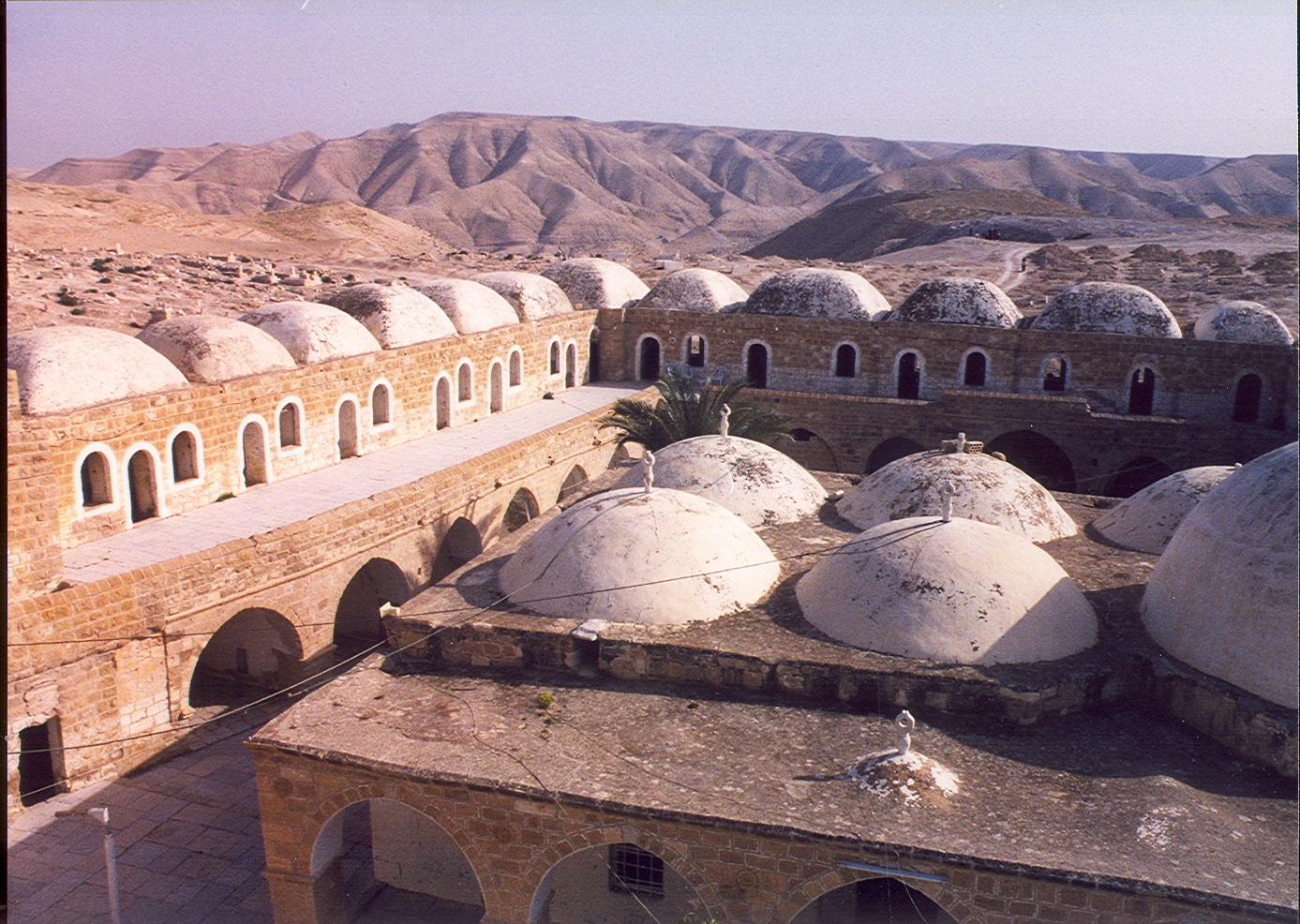

Qumran (Below picture is Fr. Carlos)
Since the discovery in the middle
of the 20th century of almost 900 scrolls in various states of completeness,
mostly written on parchment, e xtensive
excavations of the settlement have been undertaken. Jewish ritual baths and
cemeteries have been found, a large cistern, a large dining or assembly room, an
alleged scriptorium, and a guard tower.
xtensive
excavations of the settlement have been undertaken. Jewish ritual baths and
cemeteries have been found, a large cistern, a large dining or assembly room, an
alleged scriptorium, and a guard tower.
Most scholars consider it to have been home to a Jewish sect, often said to be Essenes; others have proposed that it was a villa for a single wealthy family, or even that it was a Roman fort. The large cemetery nearby may contain some answers, if women are buried there in great numbers. It would tell what the occupants of the settlement were like and who lived there; but under Jewish law excavating cemeteries is forbidden.
The scrolls were found in a series of caves just to the west of the settlement. Some of the caves seem to have been permanent libraries with built in shelves. The texts found in them represent the beliefs and practices of different Jewish religious orientations. A number of them appear to have been selected for the library there, when Qumran is thought to have become the asylum for supporters of the traditional priestly family of the Zadokites against the Hasmonean priest/kings. A letter found in the 1990s expresses the reasons for creating a community, some of which mirror Sadducean arguments in the Talmud. But most of the scrolls seem to have been dumped in the caves only during the turmoil of the First Jewish Revolt, at a time when Jericho and Jerusalem were facing the sack, or had already been sacked, but Qumran was still standing and secretly accessible from Jerusalem via the Kidron Valley.
Holy Land Greece Pilgrimages Pilgrimages Map Index Espaņol English Index